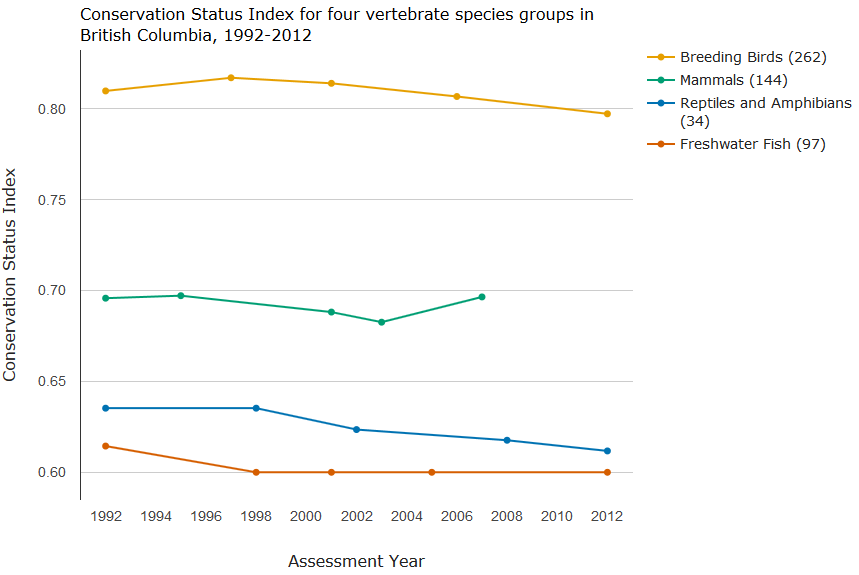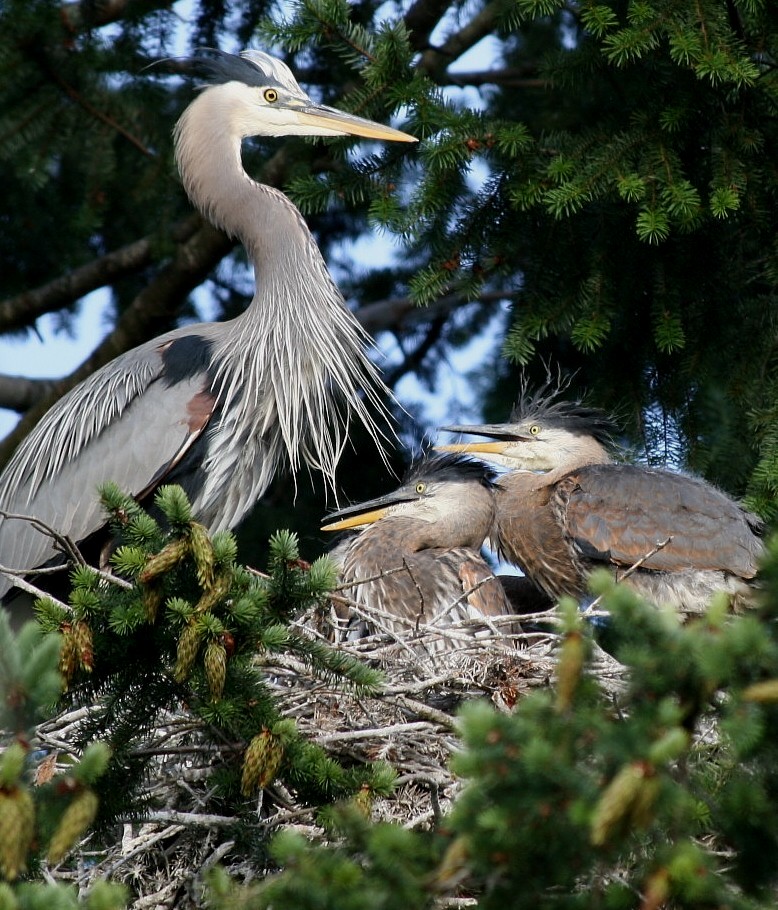Trends in the Status of Native Vertebrate Species in B.C. (1992-2012)
The Conservation Status Index, shown in the graph below, reflects the overall conservation status of a group of species at a given time, and the trend in the Conservation Status Index over time is an indication of how the overall status of a group of species is changing.
- The status of most vertebrate groups in British Columbia has declined since 1992—the year the B.C. Conservation Data Centre began assessing the status of species in British Columbia.
- Marine mammals are on the rebound! Several species which were heavily hunted in the 1800s and early 1900s have recovering populations.
- The overall decline in the status of birds was masked in the early 1990s by dramatic increases of several species that expanded their natural range into B.C.
- B.C. vertebrate groups have different levels of natural rarity. For example, most of B.C.'s reptiles and amphibians are much rarer than the majority of B.C.'s birds, and thus the Conservation Status Index for the group is lower overall.
Tip: Hover your mouse over individual data points—or tap on a mobile device—to see a short explanation of what species changed status over the preceding time period.

Interpreting the Conservation Status Index:
- Some species groups do not have a value for 2012 because not all species within the group have completed rank assessments for that year. The data will be updated once all the species within a group have been assessed.
- If all species in a group were ranked as secure (S5) by the B.C. Conservation Data Centre, the index value would be 1. If all species in a group were extirpated from B.C. (SX), the index value would be 0. It is important to note that an index value of 1 is not the baseline. There are many species in B.C. that are naturally rare, and therefore would not be considered secure (S5) even in the absence of human impacts.
- The Conservation Status Index is based on the Red List Index, developed by the International Union for the Conservation of Nature (IUCN) and Bird Life International. It has been modified to be used with NatureServe-style status ranks as assigned by the B.C. Conservation Data Centre, instead of IUCN Red List Assessment categories. Read more about the B.C. Conservation Data Centre's assessment methods.

The conservation status of Coastal Great Blue Heron (fannini subspecies) has declined. Photo credit: Ross Vennesland
References and Other Useful Links
- B.C. Conservation Data Centre
- B.C. Conservation Data Centre rank assessment methodology
- BC Species and Ecosystems Explorer (current conservation status and related information for all of B.C.'s flora and fauna)
- Butchart S.H., H. Resit Akçakaya, J. Chanson , J.E. Baillie, B. Collen, et al. 2007. Improvements to the Red List Index. PLoS ONE 2(1): e140. doi: 10.1371/journal.pone.0000140
- Quayle, J.F., L.R. Ramsay and D.F. Fraser. 2007. Trend in the Status of Breeding Bird Fauna in British Columbia, Canada, Based on the IUCN Red List Index Method. Conservation Biology 21(5): 1241-1247. doi: 10.1111/j.1523-1739.2007.00753.x
Data
*By accessing these datasets, you agree to the licence associated with each file, as indicated in parentheses below.
Download a printable version of this indicator (PDF)
Updated January 2014
Suggested Citation: Environmental Reporting BC. 2014. Trends in the Status of Native Vertebrate Species in B.C. (1992-2012). State of Environment Reporting, Ministry of Environment, British Columbia, Canada.



